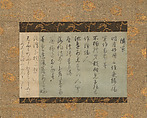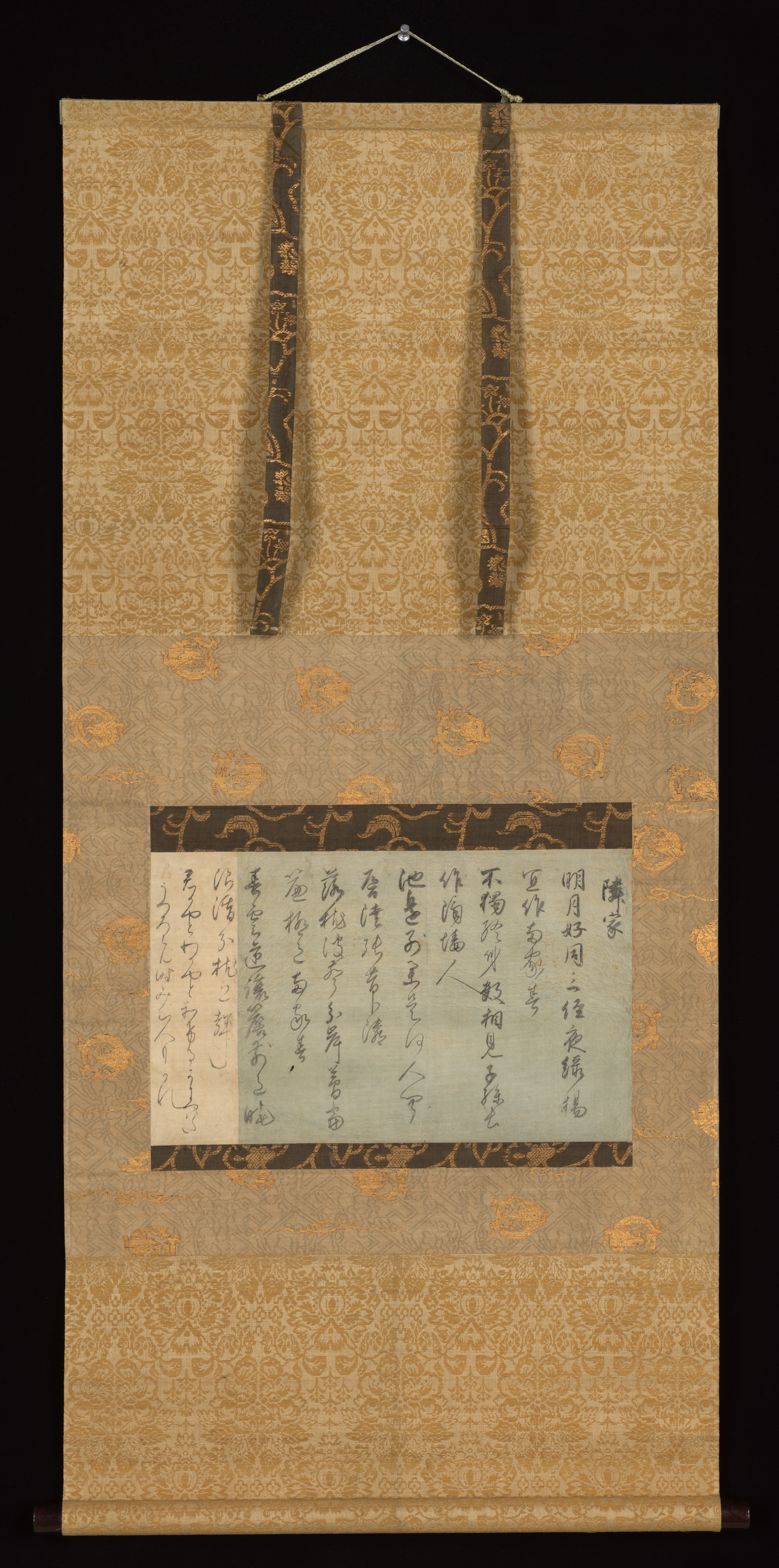Poems about Neighbors, from Japanese and Chinese Poems to Sing (Wakan rōeishū), one of the “Tatsuta Fragments” (Tatsuta-gire)
Traditionally attributed to Minamoto Ienaga Japanese
Excerpted from a lengthy handscroll, this calligraphy features five Chinese couplets and a waka (thirty-one-syllable poem) on the theme of neighbors. All are derived from Japanese and Chinese Poems to Sing, compiled in the 1010s by the courtier-poet Fujiwara no Kintō.
The poems gradually transition from standard to cursive kanji, concluding at left with the waka, which is written in kana. The waka reads:
君がやと わがやと分ける かきつばた
うつろはん時 みむ人もがな
Separating your garden
from my house’s garden—
irises—
but will anyone see them
before they start to fade?
—Trans. John T. Carpenter
Due to rights restrictions, this image cannot be enlarged, viewed at full screen, or downloaded.
This artwork is meant to be viewed from right to left. Scroll left to view more.



